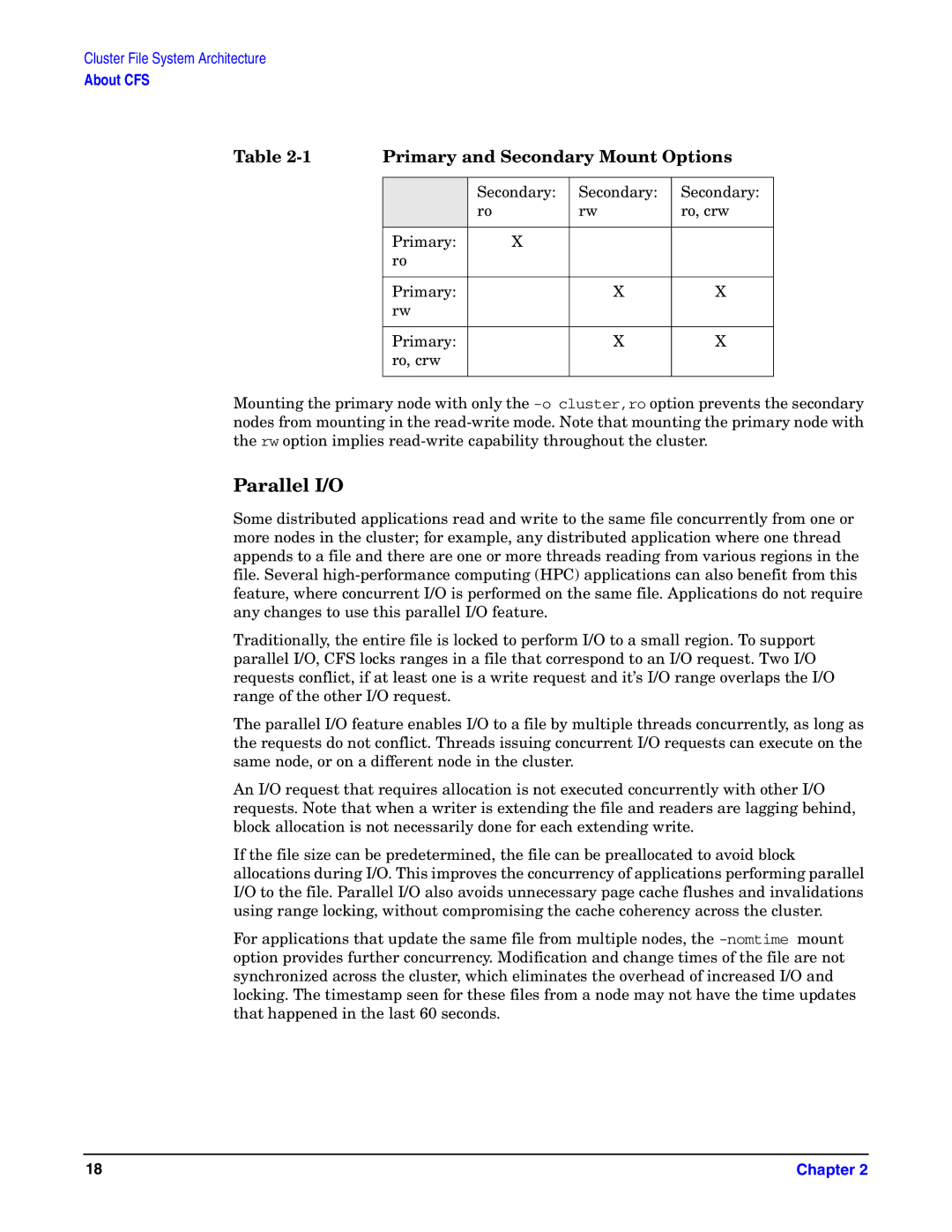Cluster File System Architecture
About CFS
Table | Primary and Secondary Mount Options | |||
|
|
|
|
|
|
| Secondary: | Secondary: | Secondary: |
|
| ro | rw | ro, crw |
|
|
|
|
|
| Primary: | X |
|
|
| ro |
|
|
|
|
|
|
|
|
| Primary: |
| X | X |
| rw |
|
|
|
|
|
|
|
|
| Primary: |
| X | X |
| ro, crw |
|
|
|
|
|
|
|
|
Mounting the primary node with only the
Parallel I/O
Some distributed applications read and write to the same file concurrently from one or more nodes in the cluster; for example, any distributed application where one thread appends to a file and there are one or more threads reading from various regions in the file. Several
Traditionally, the entire file is locked to perform I/O to a small region. To support parallel I/O, CFS locks ranges in a file that correspond to an I/O request. Two I/O requests conflict, if at least one is a write request and it’s I/O range overlaps the I/O range of the other I/O request.
The parallel I/O feature enables I/O to a file by multiple threads concurrently, as long as the requests do not conflict. Threads issuing concurrent I/O requests can execute on the same node, or on a different node in the cluster.
An I/O request that requires allocation is not executed concurrently with other I/O requests. Note that when a writer is extending the file and readers are lagging behind, block allocation is not necessarily done for each extending write.
If the file size can be predetermined, the file can be preallocated to avoid block allocations during I/O. This improves the concurrency of applications performing parallel I/O to the file. Parallel I/O also avoids unnecessary page cache flushes and invalidations using range locking, without compromising the cache coherency across the cluster.
For applications that update the same file from multiple nodes, the
18 | Chapter 2 |
